Samurai is an area influence, tile placement game.
Title: Samurai
Year Published: 2015
Designer: Reiner Knizia
Publisher: Fantasy Flight Games
Players: 2-4
Game Time: ~60 mins
Set-up Time: ~5 mins
Ages: 10+
Theme: Ancient Japan
Mechanic: Area Influence, Tile Placement, Hand Management, Set Collection
How to win: Gain the most Caste leader tokens at the end of the game.
Game Description
Players compete to gain the favour of three factions: samurai, peasants, and priests, which are represented by helmet, rice paddy, and Buddha tokens scattered about the board, which features the islands of Japan. The competition is waged through the use of hexagonal tiles, each of which help curry favour of one of the three factions — or all three at once! Players can make lightning-quick strikes with horseback ronin and ships or approach their conquests more methodically. As each token (helmets, rice paddies, and Buddhas) is surrounded, it is awarded to the player who has gained the most favour with the corresponding group.
Samurai Set-Up
Simple… you make the board up out of the 5 different pieces depending on the player count. Get a number of pieces for each caste also depending on the number of players.
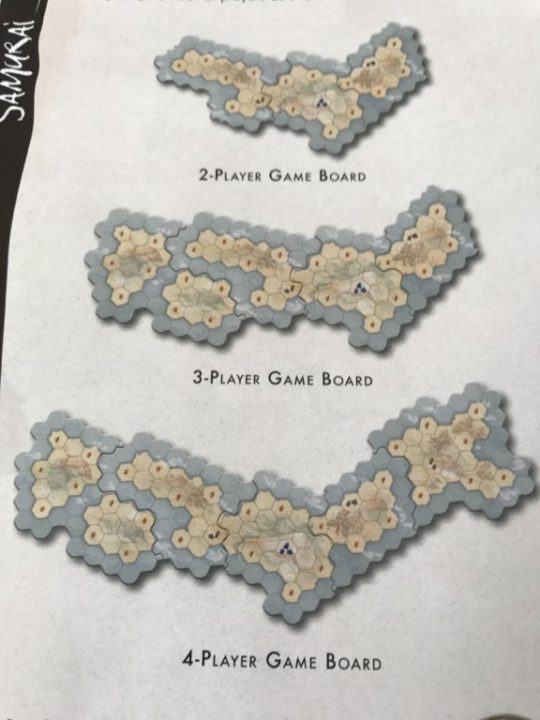
Everyone gets a screen and a stack of tiles in their colour; you choose 5 tiles to keep face up behind their screen as your opening hand. The remaining tiles are shuffled and stacked up to form your draw pile.
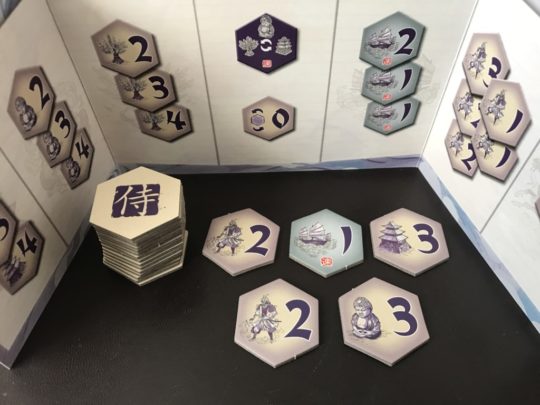
Now you populate the board starting with Edo, which gets one of each Caste.
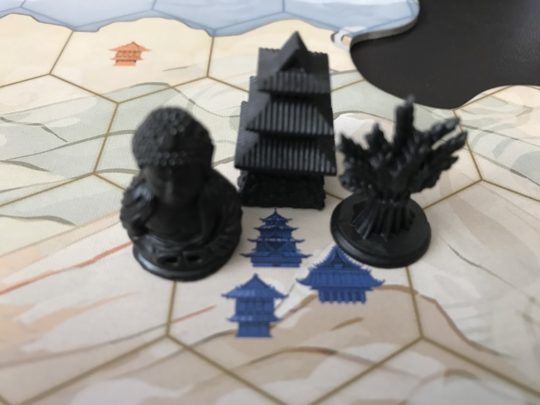
Starting with the youngest player and proceeding clockwise, takes turns adding any caste piece to the city spaces. These spaces hold 2 Caste pieces but both must be different.
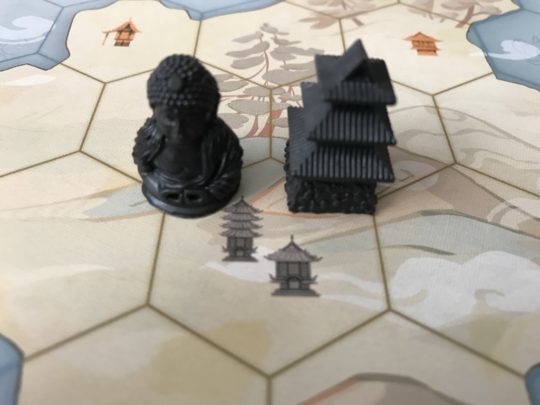
Once the cities are full players continue in turn order adding any 1 caste piece to the Village spaces which hold ANY one caste piece each.
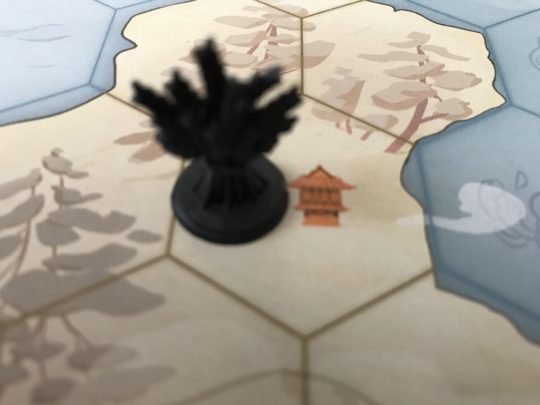
Just so you know, you can randomly place the caste pieces and start the game with a random hand of 5 tiles should you wish, I do, it’s quicker. 🙂
Samurai Game Play
This is also very simple and follows 3 steps starting with the youngest player: play tiles, check for capture, and refresh hand.
To play a tile choose one from your hand and place it on the relevant non-settlement space. (A space without those building icons on)
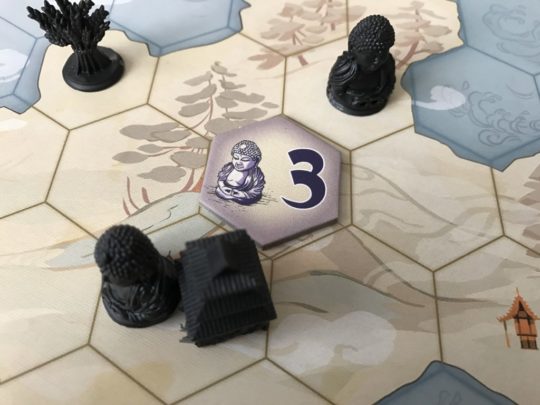
There are a few different tiles so let’s look at them now.
The caste-specific tiles give that much influence to that particular caste; they have no effect on other castes. Wild tiles (showing Samurai) affect all castes and the Ship tiles are the only tiles that can be placed on water spaces.
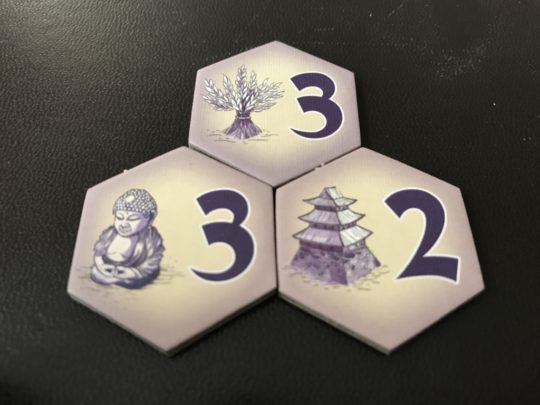
There are also a couple of action tiles that have special abilities.
The switch tile lets you switch any two castes with each other on the board but two of the same caste can never occupy the same space.
The move tile has a value of 0 and replaces any tile you placed earlier without a fast icon on it allowing you to place the moved tile into a new location. In other words, move a now useless powerful tile somewhere useful.
What is a ‘fast icon’? Well, it’s this red mark on some of the tiles.
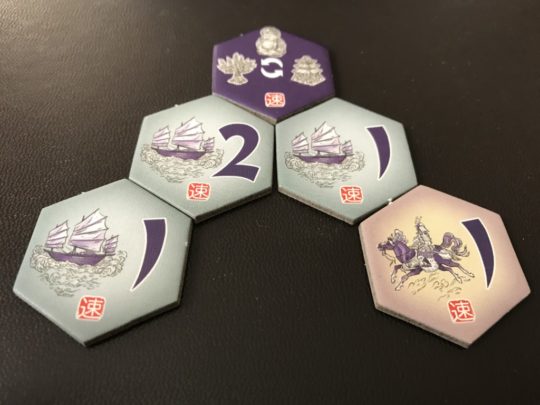
You can play as many fast tiles as you have on your turn as well as your one regular tile if you like.
As long as you play at least one tile on your turn you’re good to go and resolve captures.
Captures
To resolve a capture you check to see if all Land tiles surrounding a settlement are full. If so you see who captures the castes.
Players add up their influence by matching the caste piece plus any influence from wild tiles and the player with the most influence takes the piece and puts it behind their screen.
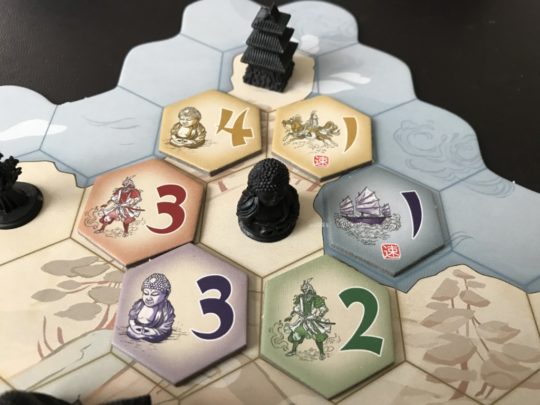
In the case of a tie, the caste piece is removed from play but kept in the view of all players.
If a settlement contains 2 or more caste pieces you check each one individually.
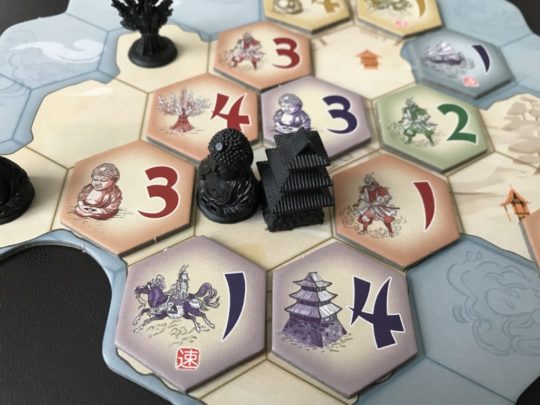
Once any surrounding settlements have been resolved, the active player draws back up to 5 tiles and play continues clockwise.
Game End
The game can end in one of 2 ways… If all castes pieces of one caste have been removed from the board or 4 pieces have been removed from play via ties in resolving captures.
Once finished it’s time for players to find out who gets which Caste leader token. Players reveal their captured caste pieces and if one player has more than any other player they get the relevant caste leader token for that caste.
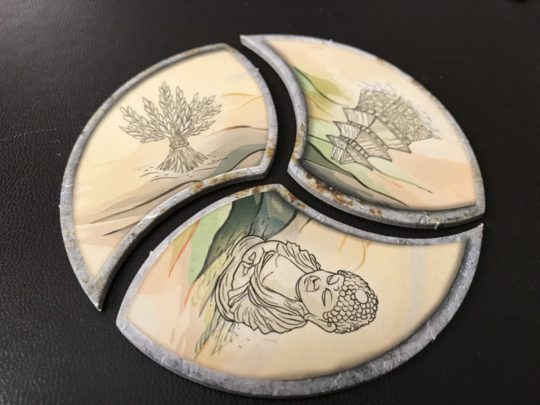
After doing this for all 3 castes the player with the most leader tokens wins.
If two or more players have 1 caste leader token each, the caste pieces for their leader are removed and the player with the most caste pieces of the other 2 castes will win.
If no one captured a caste leader token the player or players with the most caste pieces will win.
Round-Up
There you have it, a beautiful game to look at with simple, elegant gameplay that will frustrate the hell out of you.
When playing your tiles you want to have the majority, obviously… But to do this you don’t want to play too many tiles to gain one Caste. So you need to make sure you’re letting other players fill spaces so you can swoop in and take it with as few tiles as possible.
Of course, everyone else is thinking the same thing…
There is a bit of a memory thing going on too. You can try and keep track of what Castes other players have taken and try and remember which you need and which you’re leading.
But turns are simple, the game looks amazing, it scales well with 2, 3 or 4 players and is very accessible.
Samurai Rating
Such as lovely game.
I give it 7/10
Samurai First Impressions October 2015
Buddha, Rice and Pagodas. It’s so pretty…
This game is very easy…
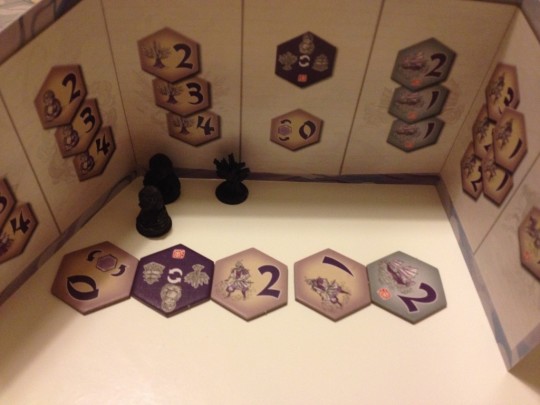
This is a very simple game that has a lot of tactical choices which are the types of games I like.
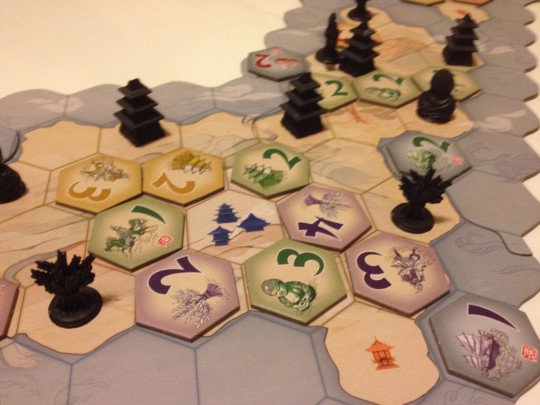
You need to attack to win and be aggressive but at the same time you only have 20 tiles and you need to use them as efficiently as possible. Putting 4 tiles around 1 token is a waste, you need your opponents there to piggyback off their tiles…
I enjoyed it quite a bit, I’m glad I own it.
Jesta ThaRogue
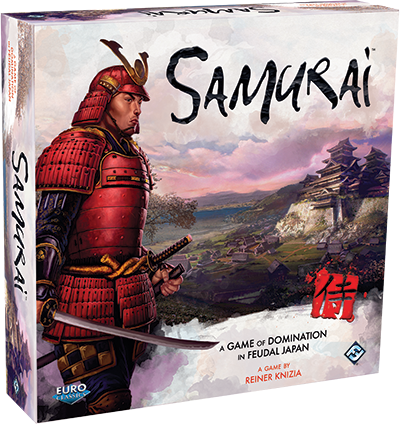

Leave a Reply